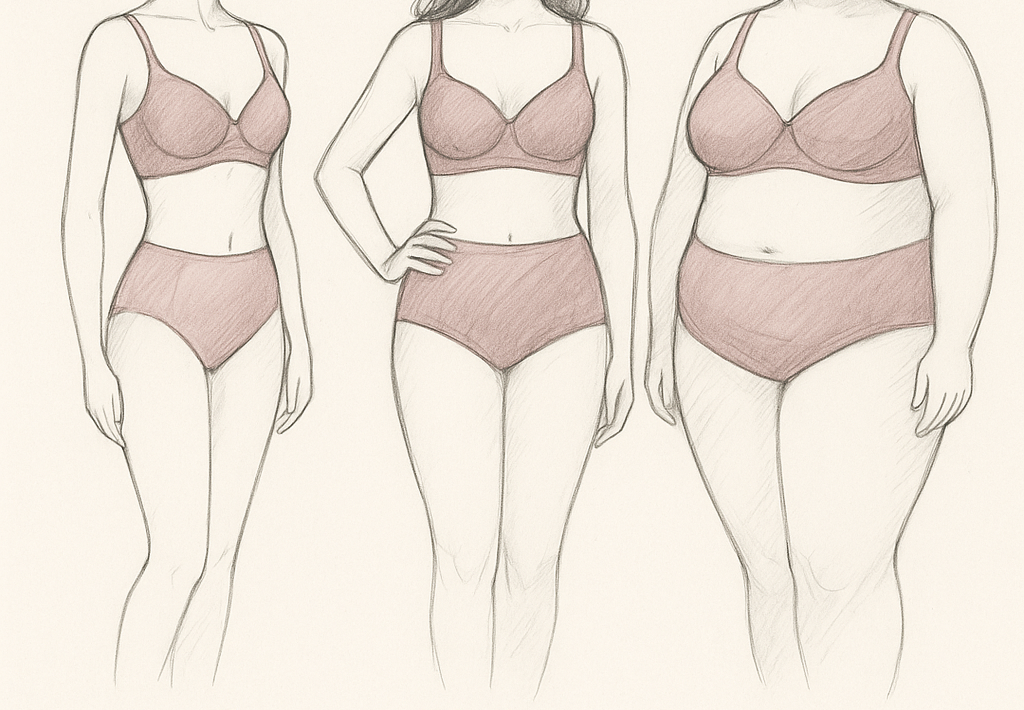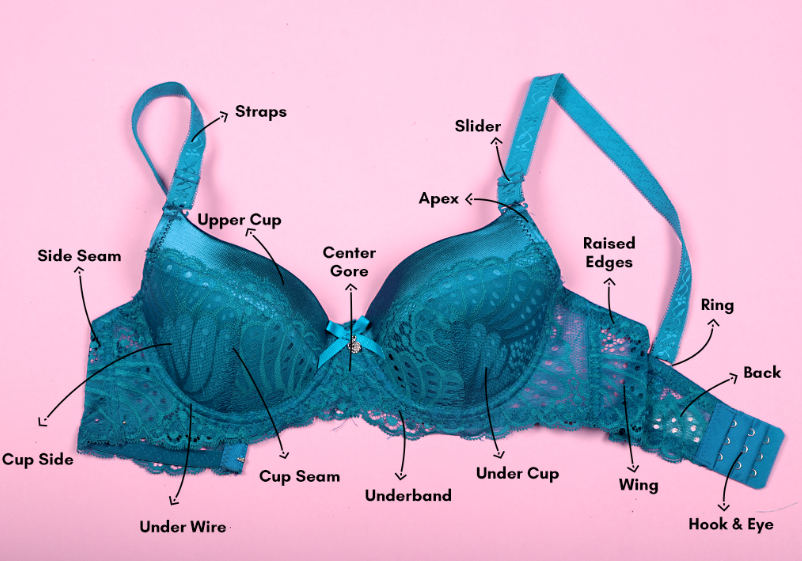Future Trends in Intimate Apparel: What B2B Buyers Need to Know?
The intimate apparel market is changing fast. What buyers knew as normal before is now old news.
According to market.us, the global lingerie market size will reach approximately $64.7 billion by 2033, up from $40.1 billion in 2023. This growth represents a compound annual growth rate of 4.9% during the forecast period of 2024 to 2033.At XIESHENG, we see big changes coming. People care more about what they buy. They want eco-friendly and inclusive products. For B2B buyers, this means working with factories that can change and offer new things fast.

I have been in the undergarment business for a long time. I have seen many trends come and go. But what is happening now feels different. It is not just about what is pretty or popular. It is about bigger shifts in how people think and live. My customers, like WALMART and DAISY FUENTES, are asking for new things. They need products that fit a wider range of body types. They want clothes made in ways that do not harm the Earth. They need proof that workers are treated well. This means that as a manufacturer, I must be ready for these changes. I must help my B2B buyers understand them too. It is not just about making products. It is about making the right products for a new kind of world. This is how we all stay strong and grow together.
Rising Consumer Awareness: Driving Significant Market Growth
Do you think customers only care about price in intimate apparel? Ignoring what people care about can make your brand fall behind very quickly.
Today, people want more from their underwear. They care about where it comes from. They care about how it is made. This pushes brands to offer better, more thoughtful products, growing the market.
Consumer awareness has truly changed the game in intimate apparel. It used to be that comfort and appearance were the main things. Now, buyers ask much more. They want to know the story behind their clothes. They care about ethical sourcing. They think about environmental impact. They want transparency from brands. For example, a few years ago, a brand might not have thought much about packaging. Now, many customers ask for less plastic or recyclable materials. This push comes from the end consumers. They research brands online. They read reviews. They choose companies that share their values. This means for my B2B clients, simply offering a pretty bra is not enough. We must also be ready to give them details on our production process. We must tell them about our labor standards. We must show our commitment to eco-friendly practices. This shift is not a passing trend. It is now a basic demand. It creates a market for products that are not just beautiful but also responsible.
Sustainability and Environmental Management: The Defining Industry Trend?
Are you still using old methods that waste resources? If your intimate apparel business ignores sustainability, you risk losing customers and falling behind.
Sustainability is vital in our industry now. It means using less plastic. It means saving water. It means using recycled materials. This is not just good for Earth. It also helps brands attract more customers who care.

Sustainability is much more than a buzzword in intimate apparel. It has become essential. I have seen a huge increase in questions about this from my buyers. They want to know about our factory's use of water. They ask about our waste management. They want to understand where our raw materials come from. Brands like KIK and WALMART now have very strict environmental policies for their suppliers. This helps drive us to innovate. We use environmentally friendly and renewable yarns, introduce seamless knitting technology to reduce fabric waste, and have passed environmental and social responsibility certifications such as BSCI and OEKO-TEX.We are exploring new materials like recycled nylon. We are looking at dyeing processes that use less water. We are also making sure our packaging is as eco-friendly as possible. It is a big challenge. But it is also a great chance. By embracing these practices, we produce undergarments that are not only comfortable and stylish but also responsible. This commitment lets my B2B partners sell products that meet the growing demand for items that are kind to the planet. It makes them more competitive. It builds trust with their customers.
Diversity in Sizes and Aesthetics: Expanding Market Inclusivity
Are your intimate apparel collections only for one body type? Not offering diverse sizes and styles means missing out on many potential customers.
The market demands clothes for everyone. This means many sizes, colors, and styles. From plus-size bras to different skin tones, inclusivity helps brands reach more people and grow.

Diversity in sizes and aesthetics is no longer an option; it is a necessity. For many years, the intimate apparel industry focused on a very narrow image of beauty. But that has changed completely. Consumers today want to see themselves represented. They want underwear that fits their actual bodies, not just an idealized body. This is why we focus heavily on our plus-size bra sets. We test them on real bodies to ensure they offer comfort and support. It is also why we develop different styles for various preferences. This includes teenage intimate wear that is modest but stylish. It includes sensual lingerie for different tastes. Our clients, such as ASHLEY, emphasize the need for a wide range of sizes and diverse color palettes, especially for "nude" shades that match many skin tones. We actively work to expand our sizing charts. We use different fit models. This ensures our products are truly inclusive. By doing this, we help our B2B partners cater to a broader audience. This makes their brands more relatable and much more successful.
Customization and Personalization: Meeting Varied Market Demands
Do you offer only standard products to your B2B customers? Without customization, your partners cannot stand out in a crowded market.
Buyers now want unique intimate apparel. This means custom designs, materials, and features. We offer personalization to help brands create strong identities. It helps them meet specific customer needs.

Customization has moved from being a niche request to a core demand. In the competitive intimate apparel market, brands need a unique selling point. They need products that reflect their specific vision. This is where my factory, XIESHENG, excels. We work as OEM manufacturers for many brands. We help them bring their exact designs to life. For example, a customer came to me recently wanting a specific type of period panty. They needed a particular absorbency level. They wanted a unique pattern on the waistband. We worked closely with their design team. We found the right fabrics. We adjusted our machines to knit the pattern. This level of personalization extends to everything from nursing bra features to the specific lace patterns on sexy lingerie. It is not just about putting a logo on a product. It is about co-creating something truly unique. This ability to customize allows our B2B partners to build strong brand identities. It helps them engage their customers on a deeper level. It also makes their offerings more responsive to market demands.
Global Supply Chain Shifts: Adapting to New Sourcing Realities
Are you relying on old supply chain methods? Recent global changes mean businesses must adapt how they get materials and make products.
The world's supply chains are changing. This means factories must be flexible. We need to find new sources. We need to work smarter. This ensures we can still deliver good products on time and safely.

The global supply chain for intimate apparel has seen many changes lately. Events like the pandemic or shipping issues show how fragile old systems can be. This means that as a manufacturer, I must be very adaptable. So do my B2B partners. We must think about new sourcing strategies. We must build stronger relationships with more suppliers. This helps us avoid problems if one source has issues. For example, we now work with over 20 sub-factories to help us. This gives us more flexibility in production. We also spend more time on risk assessment for our raw materials. We look at where they come from. We check stability. We aim to reduce delays for our clients. My company's site, www.bramingle.com, shows our full capabilities. We communicate any potential disruptions quickly and clearly. This proactive approach ensures our wholesalers and distributors still receive their orders on time. It helps them maintain their inventory. It helps them keep their shelves stocked. It is about being ready for anything. It is about ensuring business continuity even in uncertain times.
Conclusion
The future of intimate apparel demands awareness, sustainability, diversity, customization, and flexible supply chains. B2B buyers must partner with adaptable manufacturers like us.

